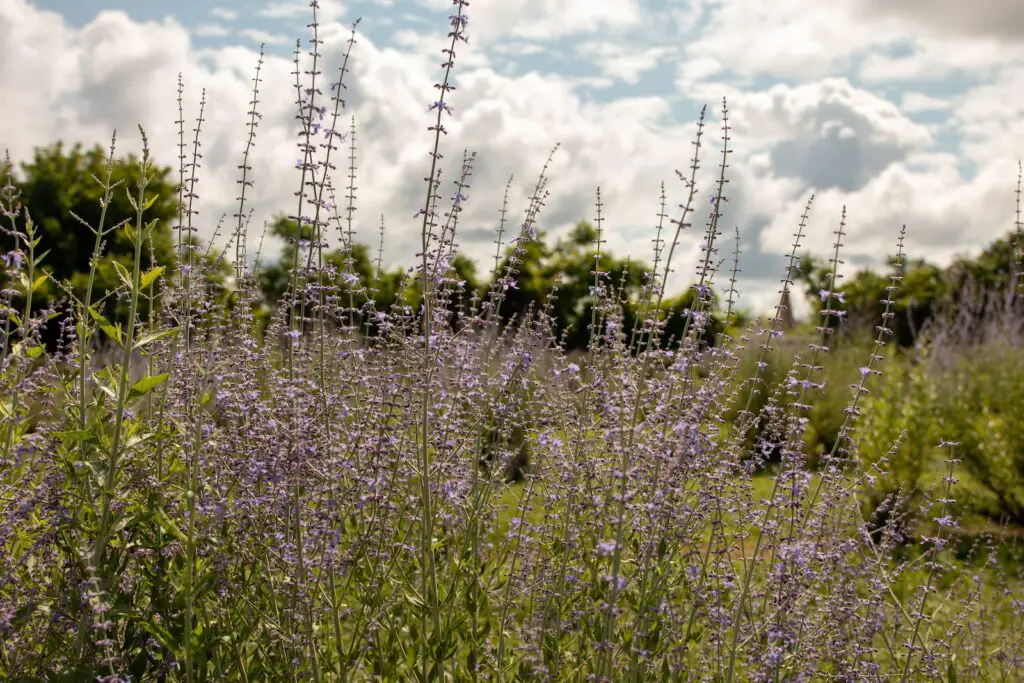
Russian Sage is a beautiful and hardy perennial herb that is known for its silver-gray foliage and lavender-blue flowers. It is a popular plant among gardeners because of its low maintenance and drought tolerance. However, to keep your Russian Sage plant healthy and looking its best, it is important to prune it regularly.
Pruning is an essential part of maintaining the health and beauty of Russian Sage. Pruning helps to remove dead and diseased branches, encourage new growth, and maintain the plant’s shape and size. But how do you prune Russian Sage? In this article, we will provide you with a step-by-step guide on how to prune your Russian Sage plant to keep it healthy and looking its best. We will cover everything from when to prune, how to prune, and what tools you will need to get the job done.
Table of Contents
Understanding Russian Sage
Russian Sage, also known as Perovskia atriplicifolia, is a woody sub-shrub and a member of the mint family. It is a perennial plant that is native to central Asia and Iran. The plant is a popular choice for landscaping due to its attractive silver-grey foliage and blue-purple flowers that bloom in late summer and early fall.
Russian Sage is a hardy plant that can grow up to 4 feet tall and 3 feet wide. It thrives in full sun and well-drained soil, making it an ideal choice for xeriscaping. The plant is drought-tolerant and requires minimal maintenance, making it a great addition to any garden.
The foliage of Russian Sage is fragrant and has a distinct aroma, which is why it is commonly used in potpourri and other scented products. The plant is also a popular choice for attracting pollinators such as bees and butterflies to the garden.
When pruning Russian Sage, it is important to keep in mind that the plant blooms on new wood. This means that pruning should be done in late winter or early spring before new growth begins. Pruning should also be done selectively, removing only the dead or damaged wood and cutting back the plant to maintain its shape.
In summary, Russian Sage is a versatile and attractive perennial plant that is easy to care for and requires minimal maintenance. It is a great choice for xeriscaping and is a popular choice for attracting pollinators to the garden. When pruning, it is important to prune selectively and in late winter or early spring to maintain the plant’s shape and encourage new growth.
Ideal Growing Conditions
Russian Sage is a hardy and drought-tolerant plant that thrives in full sun and well-drained soil. It is ideal for growing in USDA hardiness zones 4 to 9.
The plant prefers soil with a pH between 6.0 and 8.0. It can tolerate poor soil conditions but performs best in well-draining soil. If the soil is too heavy, it can lead to root rot and other diseases.
Russian Sage requires at least six hours of direct sunlight per day to thrive. It is important to ensure that the plant has enough sun exposure to produce the best blooms and foliage.
When planting Russian Sage, it is essential to space the plants at least three feet apart to allow for proper air circulation. This will help prevent diseases and pests from infesting the plant.
In summary, to ensure the best growth and health of Russian Sage, it is recommended to plant it in full sun, well-drained soil with a pH between 6.0 and 8.0. Adequate spacing and sun exposure are also crucial for the plant’s success.
Varieties of Russian Sage
Russian Sage is a popular perennial plant that is known for its beautiful, long-lasting blooms and hardy nature. There are several varieties of Russian Sage that are available, each with their unique characteristics. Here are some of the most popular varieties of Russian Sage:
Little Spire
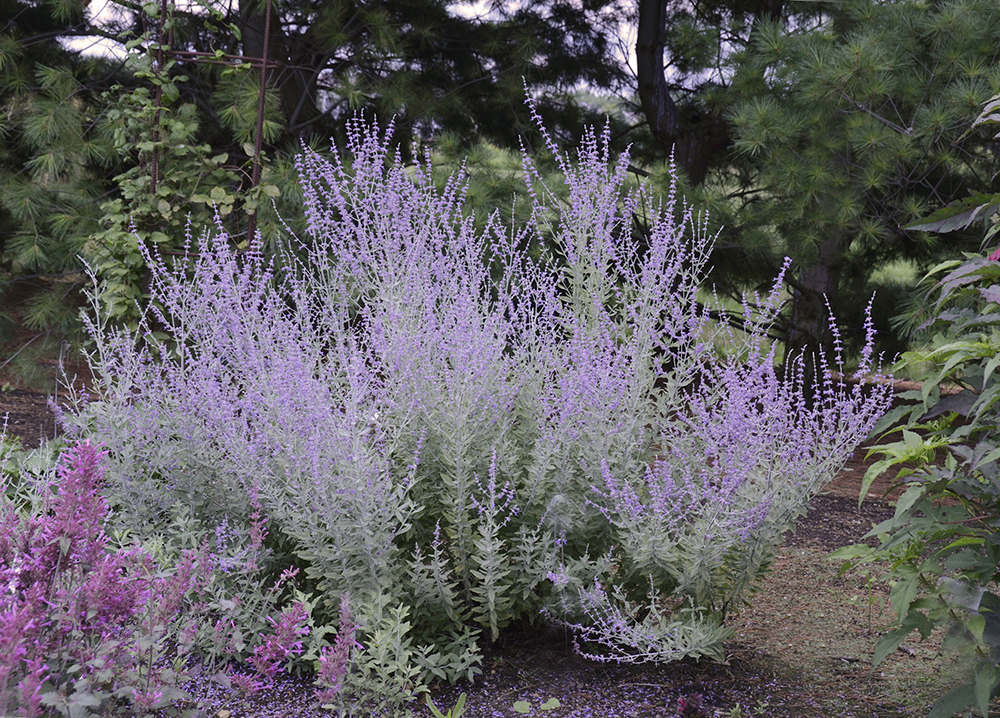
Little Spire is a compact variety of Russian Sage that grows to a height of about 2-3 feet. It is known for its upright growth habit and its delicate, lavender-blue flowers. Little Spire is an excellent choice for small gardens or for planting in containers.
Blue Haze
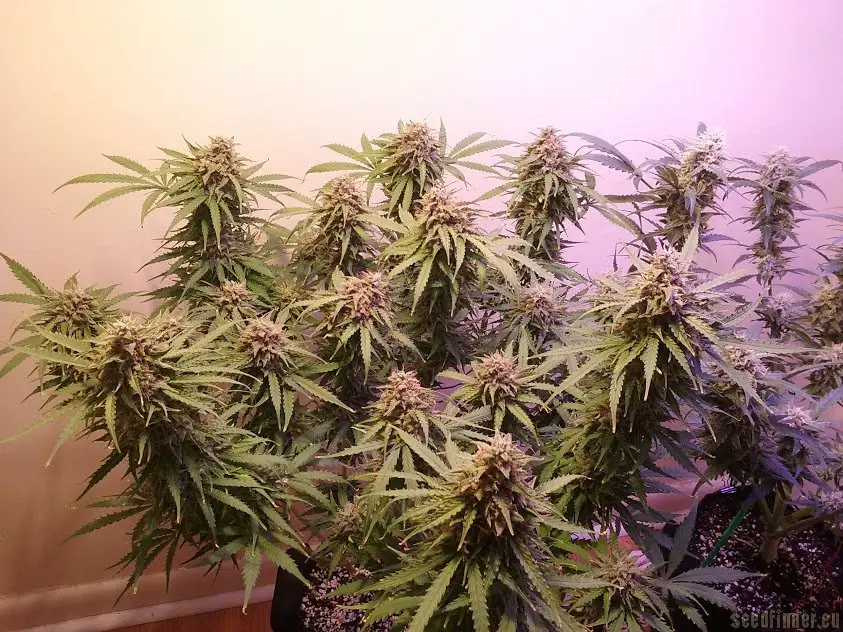
Blue Haze is a popular variety of Russian Sage that is known for its beautiful, silvery-blue foliage. It grows to a height of about 3-4 feet and produces long, slender spikes of lavender-blue flowers. Blue Haze is an excellent choice for planting in mixed borders or for use as a focal point in the garden.
Blue Spire
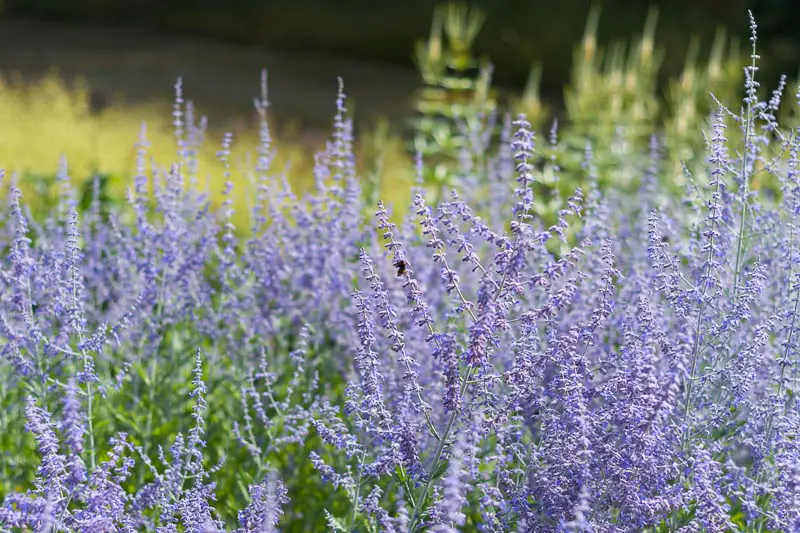
Blue Spire is a tall variety of Russian Sage that can grow up to 5-6 feet in height. It produces long, slender spikes of deep blue flowers and has a strong, upright growth habit. Blue Spire is an excellent choice for planting in the back of the border or for use as a screen or hedge.
Filagran
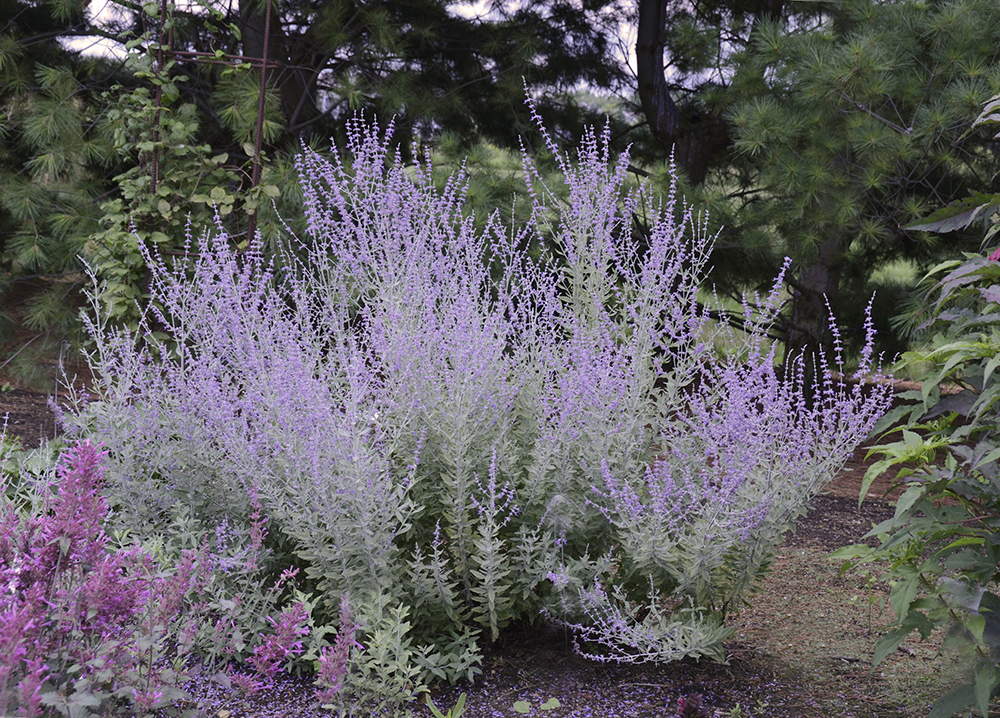
Filagran is a compact variety of Russian Sage that grows to a height of about 2-3 feet. It is known for its delicate, silver-green foliage and its long-lasting blooms. Filagran is an excellent choice for planting in mixed borders or for use as a ground cover.
Longin
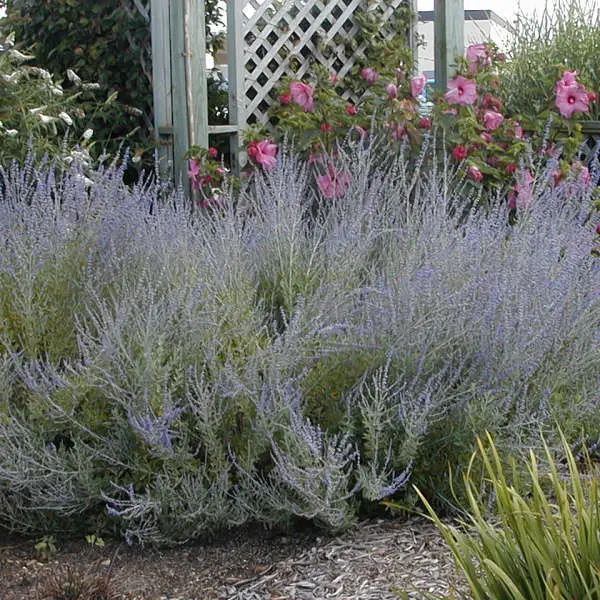
Longin is a tall variety of Russian Sage that can grow up to 5-6 feet in height. It produces long, slender spikes of lavender-blue flowers and has a strong, upright growth habit. Longin is an excellent choice for planting in the back of the border or for use as a screen or hedge.
There are many other cultivars of Russian Sage available, each with their unique characteristics. When choosing a variety of Russian Sage, it is important to consider the plant’s growth habit, foliage color, and flower color to ensure that it will fit well in your garden.
Planting Russian Sage
Russian Sage is a hardy perennial plant that grows well in containers or directly in the ground. When planting Russian Sage, it is important to choose a location that receives full sun and has well-draining soil.
If planting in a container, choose a pot that is at least 12 inches in diameter and depth to allow for proper root growth. Fill the pot with a high-quality compost and mix in some sand or perlite to improve drainage.
When planting directly in the ground, prepare the soil by adding compost or other organic matter to improve drainage and fertility. It is best to plant Russian Sage in the fall, so it has time to establish roots before winter.
When planting, make sure to space the plants at least 2-3 feet apart to allow for proper air circulation and prevent overcrowding. Water the plants regularly, especially during the first few weeks after planting, to help them establish themselves.
Overall, planting Russian Sage is relatively easy as long as you choose the right location and provide proper care.
Pruning Basics
Pruning Russian Sage is essential for maintaining its form and promoting new growth. Pruning should be done in early spring, before new growth appears. Over-pruning should be avoided, as it can damage the plant and lead to stunted growth.
To prune Russian Sage, you will need a pair of sharp pruning shears. It is important to keep the shears clean and sharp to avoid damaging the plant.
When pruning, focus on removing dead or damaged branches, as well as any growth that is crossing or rubbing against other branches. This will help maintain the plant’s form and promote healthy growth.
It is also important to avoid cutting back more than one-third of the plant at once. This can lead to over-pruning and damage to the plant. If the plant has become overgrown, it may be necessary to prune over the course of a few years to avoid damaging it.
In summary, pruning Russian Sage is a key aspect of its maintenance. By focusing on removing dead or damaged branches and avoiding over-pruning, you can promote healthy growth and maintain the plant’s form.
Seasonal Pruning Guide
Russian sage requires seasonal pruning to ensure it grows healthy and strong. Here is a seasonal pruning guide to help you keep your Russian sage in top shape throughout the year.
Late Winter
In late winter, prune your Russian sage down to about 6 inches above the ground. This will encourage new growth and help prevent the plant from becoming too woody. Be sure to remove any dead or damaged branches as well.
Spring
In the spring, once new growth has emerged, you can begin to shape your Russian sage. Remove any weak or spindly branches and cut back any branches that are growing too long. You can also pinch back the tips of the branches to encourage bushier growth.
Summer
During the summer, your Russian sage will be in full bloom. Avoid pruning during this time as it can reduce the number of flowers. Instead, focus on deadheading spent blooms to encourage new growth and prolong the blooming period.
Early Autumn
In early autumn, you can give your Russian sage a light pruning to remove any dead or damaged branches and to shape the plant. Be sure to avoid cutting back too much as this can reduce the number of flowers the following year.
Winter
In the winter, your Russian sage will go dormant. You can prune it back further if necessary, but be sure to leave at least a few inches of growth above the ground to protect the plant from winter damage.
By following this seasonal pruning guide, you can keep your Russian sage healthy and looking its best year-round.
Caring for Russian Sage
Russian Sage is a low-maintenance, drought-tolerant perennial that requires very little care once established. However, a few simple steps can help ensure that your plant stays healthy and blooms beautifully year after year.
Soil and Water
Russian Sage prefers well-drained soil and can tolerate dry conditions. It does not like to sit in water, so be sure to plant it in a location with good drainage. Water regularly during the growing season, but do not overwater, as this can lead to root rot.
Pruning
Pruning is an important part of caring for Russian Sage. Prune the plant in late winter or early spring before new growth appears. Cut back the old wood to about 6 inches from the ground. This will encourage new growth and prevent the plant from becoming overgrown.
Fertilizer
Russian Sage does not require a lot of fertilizer, but a light feeding in the spring can help promote healthy growth and blooming. Use a balanced fertilizer and follow the manufacturer’s instructions.
Pests and Diseases
Russian Sage is generally free of pests and diseases. However, it can be susceptible to powdery mildew in humid conditions. If you notice white powdery spots on the leaves, remove the affected leaves and treat the plant with a fungicide.
Hardiness Zones
Russian Sage is hardy in USDA hardiness zones 4 to 9. In colder zones, it may die back to the ground in the winter, but will regrow in the spring.
Bloom Time
Russian Sage blooms in late summer to early fall, producing tall spikes of lavender-blue flowers that attract bees and butterflies. Deadhead spent blooms to encourage more blooming.
Flopping
Russian Sage can become floppy as it grows. To prevent this, stake the plant or prune it back by one-third in early summer.
Runners
Russian Sage can spread by runners, but is not invasive. If you want to control its spread, simply dig up the runners and replant them elsewhere.
Growing Season
Russian Sage grows during the summer months and goes dormant in the winter. It does not require any special care during the dormant season.
By following these simple care tips, you can enjoy a beautiful and healthy Russian Sage plant year after year.
Propagation Techniques
Russian sage can be propagated through several techniques. Dividing the plant is one of the easiest ways to propagate Russian sage. It is best to divide the plant in early spring before new growth appears. Carefully dig up the plant and separate the clumps into smaller sections, making sure that each section has a healthy root system. Replant the sections in well-draining soil and water thoroughly.
Another way to propagate Russian sage is through basal cuttings. Basal cuttings are taken from the base of the plant in early spring before new growth appears. Cut a 3-4 inch stem from the base of the plant and remove the lower leaves. Dip the cut end in rooting hormone and plant it in a pot with well-draining soil. Keep the soil moist and place the pot in a warm, bright location. In a few weeks, the cutting should develop roots and can be transplanted into the garden.
Russian sage can also be propagated from seeds. Collect the seeds from the plant in the fall and store them in a cool, dry place until spring. In early spring, sow the seeds in a pot with well-draining soil. Keep the soil moist and place the pot in a warm, bright location. In a few weeks, the seeds should germinate and can be transplanted into the garden.
Finally, Russian sage is a subshrub, which means that it can be propagated through layering. Layering is a technique where a stem is bent down and buried in the soil, allowing it to develop roots. To propagate Russian sage through layering, select a healthy stem and bend it down to the ground. Make a small cut on the stem where it touches the ground and bury it in the soil. Keep the soil moist and in a few weeks, the stem should develop roots. Cut the stem from the parent plant and transplant it into the garden.
Companion Planting
Russian sage is a great addition to any garden, and it can be even better when planted alongside certain other plants. Companion planting can help to create a beautiful and harmonious garden, and it can also help to improve the health of your plants. Here are some plants that can be great companions for Russian sage:
Eryngiums
Eryngiums, also known as sea holly, are a great companion plant for Russian sage. Both plants thrive in full sun and well-drained soil, and they also have a similar color palette. The spiky, blue flowers of the eryngiums complement the soft, lavender-blue flowers of the Russian sage, creating a beautiful contrast.
Rudbeckias
Rudbeckias, also known as black-eyed Susans, are another great companion plant for Russian sage. They bloom at the same time as Russian sage and have a similar color palette, with yellow and gold petals that complement the lavender-blue flowers of the Russian sage. They also attract pollinators, which can help to improve the health of your garden.
Echinaceas
Echinaceas, also known as coneflowers, are a great companion plant for Russian sage. They have a similar bloom time and color palette, with pink, purple, and white petals that complement the lavender-blue flowers of the Russian sage. They also attract pollinators and can help to improve the health of your garden.
Herbaceous Border
Russian sage can also be planted alongside other herbaceous plants in a mixed border. It pairs well with other plants that have a similar habit, such as catmint, salvia, and yarrow. These plants all thrive in full sun and well-drained soil and can help to create a beautiful and harmonious garden.
Gravel Garden
Russian sage is also a great plant for a gravel garden, where it can be planted alongside other drought-tolerant plants such as sedums, agaves, and yuccas. These plants all thrive in well-drained soil and can help to create a low-maintenance, water-wise garden.
In conclusion, Russian sage is a versatile and beautiful plant that can be paired with a variety of other plants to create a beautiful and harmonious garden. When choosing companion plants, consider plants that have a similar bloom time, color palette, and growing conditions.
Benefits of Russian Sage
Russian Sage (Perovskia atriplicifolia) is a hardy, drought-tolerant perennial plant that is native to Asia. It is a popular choice for xeriscaping, as it requires little water once established. Here are some of the benefits of growing Russian Sage:
Beautiful Flowers
Russian Sage produces beautiful lavender-purple flowers that bloom from mid-summer to early fall. The flowers are arranged in long, slender panicles that can grow up to 12 inches long. The flowers are a favorite of pollinating insects, such as bees and butterflies, making it a great plant for attracting beneficial insects to your garden.
Drought Tolerance
Russian Sage is a tough plant that can withstand hot, dry conditions. It is an excellent choice for xeriscaping, as it requires little water once established. This makes it a great choice for gardeners who want to conserve water and reduce their water bills.
Low Maintenance
Russian Sage is a low-maintenance plant that requires little care once established. It is a great choice for busy gardeners who don’t have a lot of time to devote to their gardens. It is also resistant to most pests and diseases, making it a great choice for organic gardeners.
Versatility
Russian Sage is a versatile plant that can be used in a variety of garden settings. It looks great in mixed borders, rock gardens, and as a backdrop for other plants. It also pairs well with other plants, such as Salvia yangii, which has similar blue flowers.
In summary, Russian Sage is a beautiful, drought-tolerant plant that is easy to care for and versatile in the garden. Its lavender-purple flowers and ability to attract pollinating insects make it a great choice for any garden.
Common Pruning Mistakes and Solutions
Improper pruning can lead to a number of problems with Russian Sage, including reduced flowering, weak growth, and a lack of overall vigor. Here are some common mistakes to avoid when pruning and solutions to help you achieve optimal results.
1. Pruning at the wrong time
Russian Sage should be pruned in the early spring, just as new growth begins to emerge. Pruning at any other time can result in reduced flowering and weakened growth. If you accidentally prune your Russian Sage at the wrong time, don’t worry – it will likely recover, but it may take a season or two to do so.
2. Over-pruning
Over-pruning can be just as harmful as under-pruning. Removing too much of the plant can lead to a lack of vigor and reduced flowering. When pruning, it’s important to never remove more than one-third of the plant at a time. If you need to remove more than that, do it over the course of several seasons.
3. Using dull or dirty pruning tools
Using dull or dirty pruning tools can damage the plant and make it more susceptible to disease. Make sure to use sharp, clean pruning shears or loppers when pruning. If your tools are dull, have them sharpened before you begin.
4. Failing to encourage new growth
Pruning is an important part of encouraging new growth in Russian Sage. When pruning, make sure to cut back to a healthy bud or branch. This will encourage new growth and help to keep the plant looking full and healthy.
5. Ignoring texture
Russian Sage is prized for its airy, wispy texture. When pruning, make sure to preserve this texture by only removing dead or damaged branches. Avoid pruning too heavily, as this can result in a dense, bushy appearance that detracts from the plant’s natural beauty.
By avoiding these common pruning mistakes and following the solutions provided, you can ensure that your Russian Sage stays healthy, vibrant, and full of fresh flushes of flowers year after year.